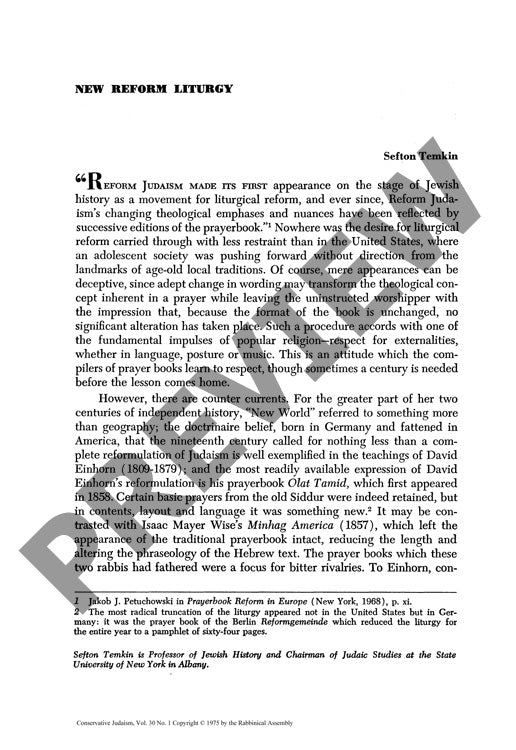New Reform Liturgy
Couldn't load pickup availability
Reform Judaism's liturgical journey from radical nineteenth-century innovations to renewed traditionalism culminated dramatically in the 1975 *Gates of Prayer*, marking a significant reversal in American Jewish worship. Through historical and textual analysis of successive prayer books—from David Einhorn's *Olat Tamid* (1858) and Isaac Mayer Wise's *Minhag America* (1857), through the *Union Prayer Book* (1894-1940), to contemporary reforms—a pattern of theological and ritual evolution emerges. Comparative examination of Hebrew texts, English translations, and theological concepts reveals *Gates of Prayer's* departure from earlier Reform practices through its incorporation of previously abandoned traditional elements: expanded Hebrew texts, restored observances of *Tisha b'Av*, *Yom Haatzma'ut*, and *Yom Hashoah*, and provisions for *tallit* and *tefillin*. Yet this return to tradition brings its own complexities, including problematic inconsistencies in divine name translations and English renderings that often diverge substantially from their Hebrew sources. These liturgical transformations reflect Reform Judaism's broader attempt to reconnect with "Universal Israel" while potentially facilitating religious consolidation with Conservative Judaism, though the prayer book's diversity suggests that organizational rather than creedal unity defines contemporary Reform identity.

More Information
-
Physical Description
-
Publication Information
Published 1975
ISBN
-
Publication Credits
Sefton Temkin

